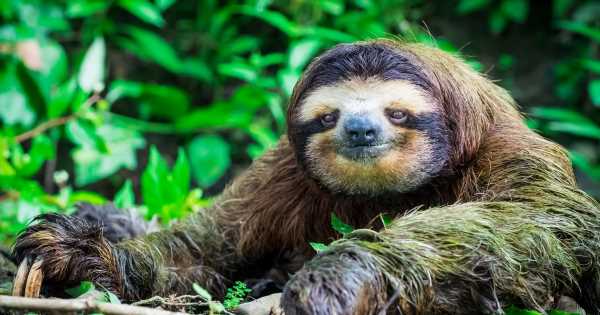Archaeologists have unearthed an astonishing eight-mile-long cave painting that shows car-sized sloths being decapitated by hunters.
The painting, which is believed to be of a scene over 12,000 years old, shows South America's incredible array of ice age beasts including giant ground sloths, elephantine herbivores and a deer-like animal with a long snout.
The beasts appear in the painting surrounded by groups of human figures that are believed to be hunters, that have decapitated some of the animals.
These creatures, which have long been extinct, have been immortalised in the artwork that was found in the Colombian Amazon rainforest, Serranía de la Lindosa, and created by some of the earliest humans that lived there according to a new study suggests
Study author Jose Iriarte, an Archaeology professor at the University of Exeter said: "The paintings have the whole diversity of Amazonia. Turtles and fishes to jaguars, monkeys and porcupines.
"They encountered these large-bodied mammals and they likely painted them. And while we don't have the last word, these paintings are very naturalistic and we're able to see morphological features of the animals."
Iriate claims the painting, that he has dubbed "the last journey," would have taken centuries, if not millennia, to complete.
He said it represents the arrival of humans in the last region to be colonised by homo sapiens as they spread around the world facing unknown beasts and terrain on their journey from Africa.
However, other archaeologists argue that the preservation of the paintings suggests a more recent origin.
To stay up to date with all the latest news, make sure you sign up for one of our newsletters here.
They also argue that the decapitated giant ground sloth identified by Iriarte could be a capybara, which is still around in that region today.
Further study of the paintings could shed light on whether the painting is of giant animals that went extinct and the reason why they did.
However, Iriarte said no bones of the extinct creatures were found during archaeological digs in the area meaning the beasts weren't a source of food for the painters.
Source: Read Full Article


